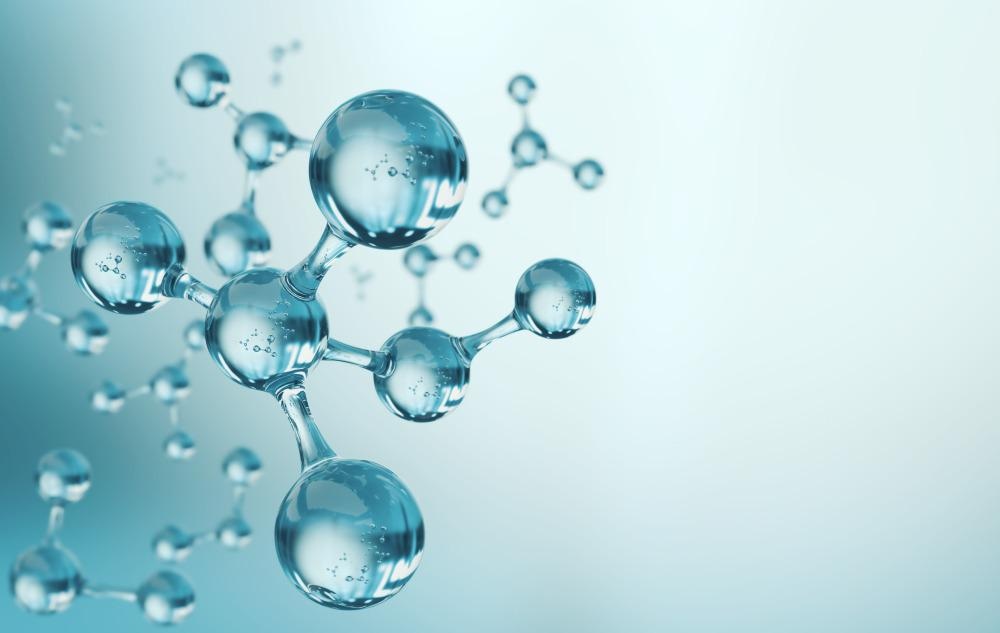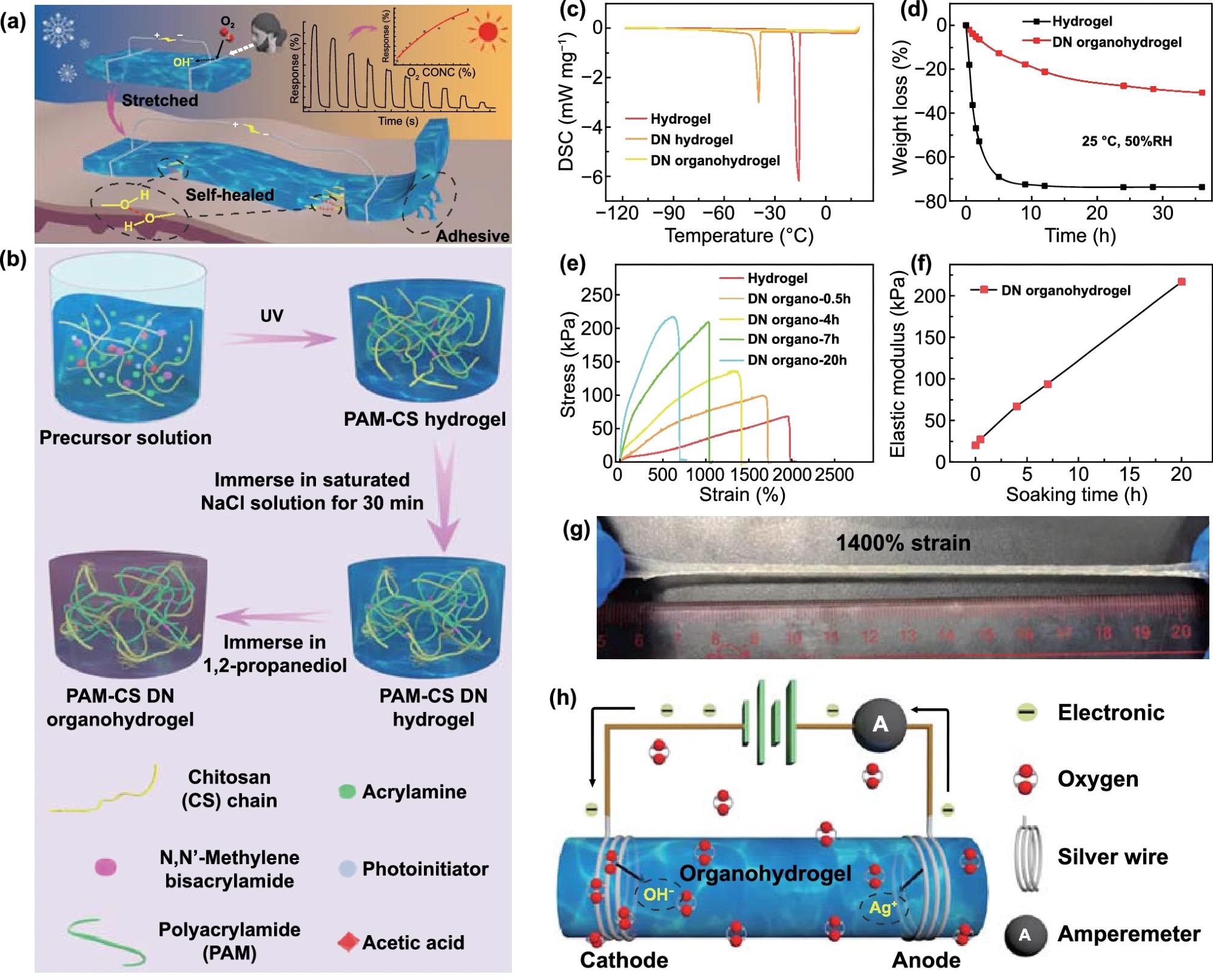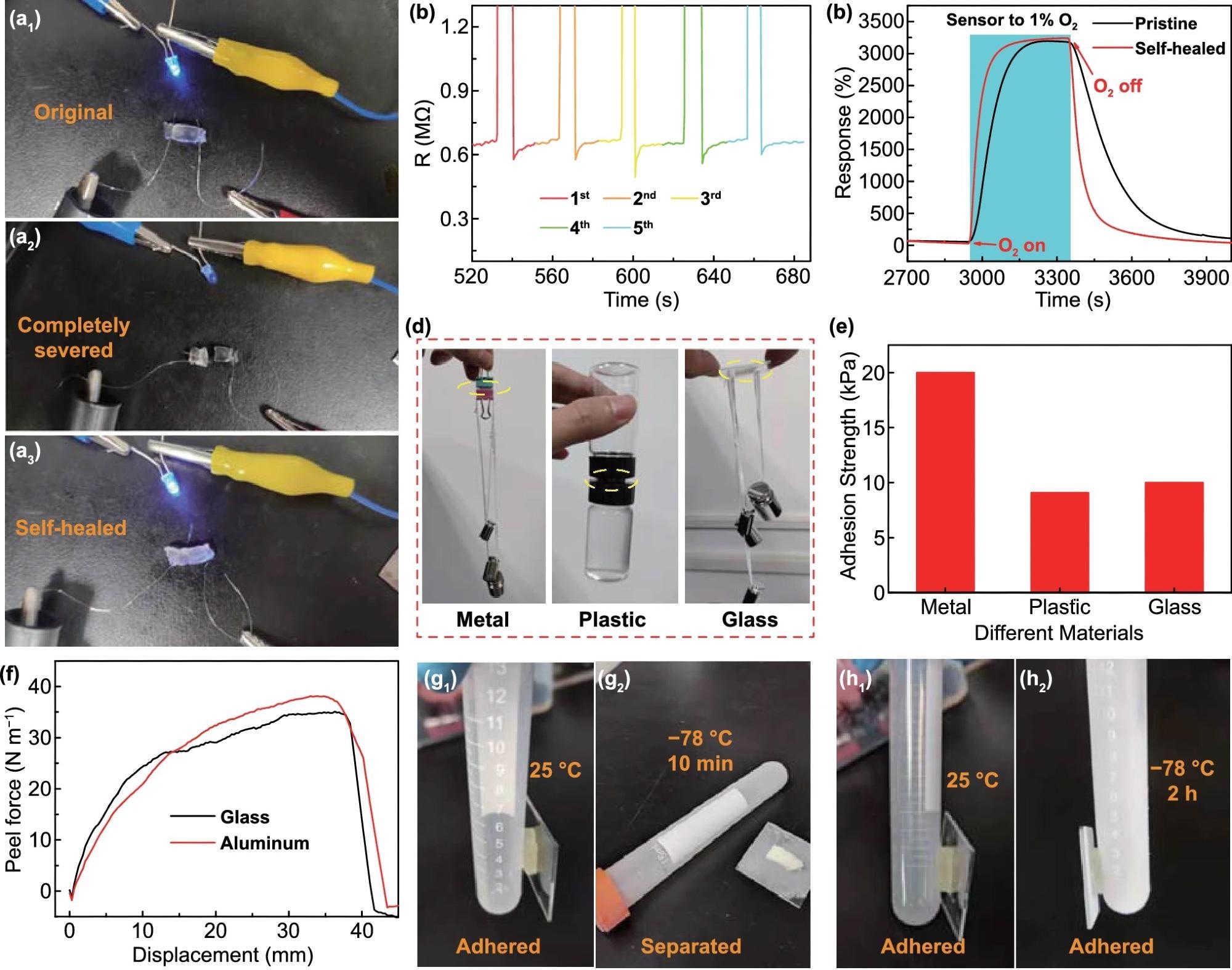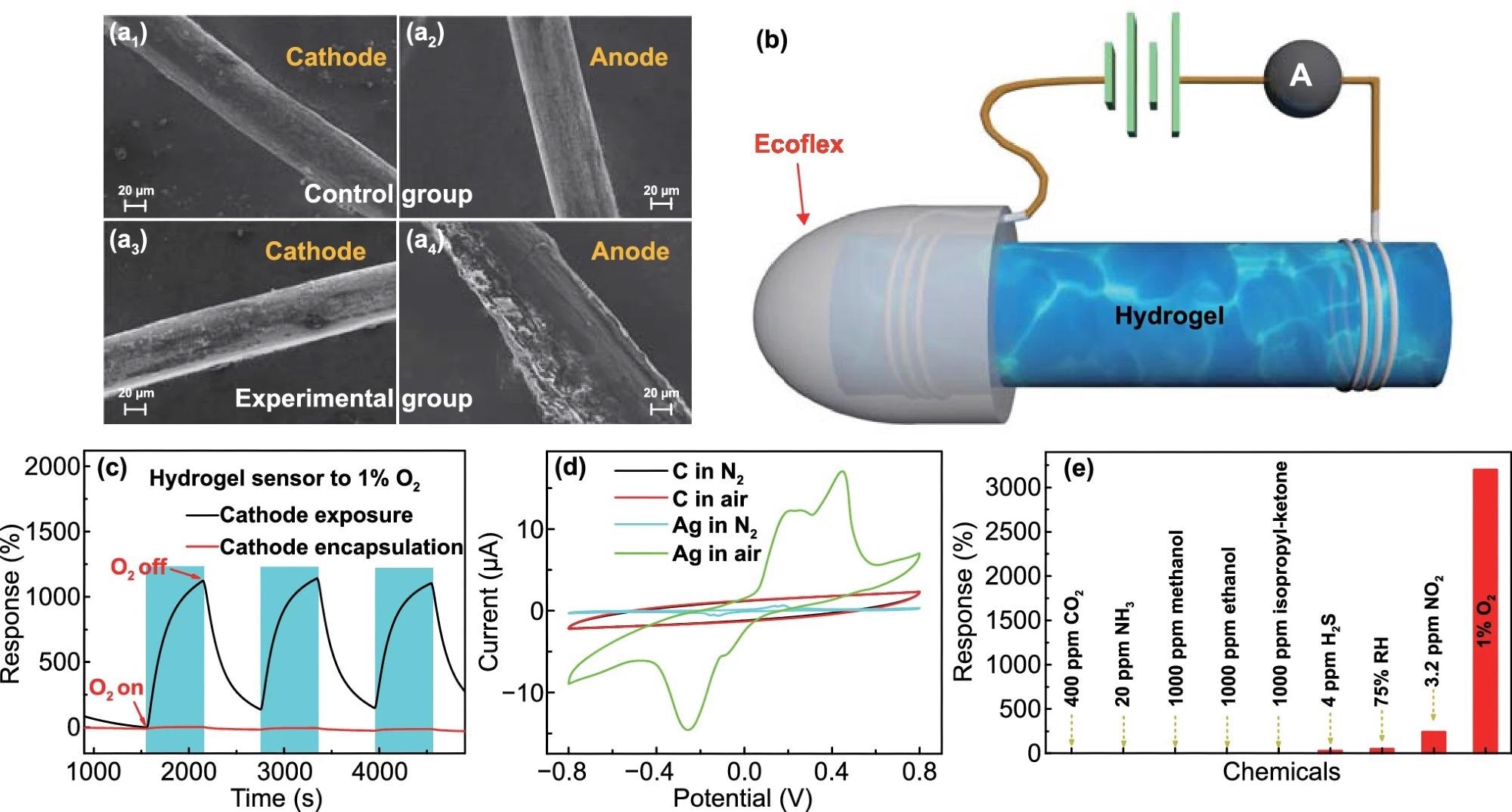Researchers from China and Israel have published an article in the journal Nano-Micro Letters focusing on a novel flexible, self-healing, self-adhesive, ambient temperature oxygen sensor with remarkable repeatability.

Study: Self-Healing, Self-Adhesive and Stable Organohydrogel-Based Stretchable Oxygen Sensor with High Performance at Room Temperature. Image Credit: Anusorn Nakdee/Shutterstock.com
Numerous instruments used mostly for tracking safety and environmental pollution have increasingly penetrated people's everyday lives to improve citizens’ quality of life. Gas sensors can be used to detect the presence of various substances in the atmosphere.
Why Monitoring of Oxygen is Necessary
In human living activities, oxygen is the most important gas. A low-oxygen atmosphere causes a variety of negative physiological effects in the human body. When the oxygen content falls below 17%, it typically causes effects such as dyspnoea, weariness, and diminished focus.
Furthermore, deadly suffocation incidents can develop when the concentration of oxygen is less than 12%. In some cases, such as anaesthetic equipment and hyperbaric oxygen rooms in institutions and oxygen content measurements for aeronautical and marine operations, individuals require oxygen at amounts higher than that found in the air. As a result, regulating oxygen concentrations across a broad range is critical.

a Schematic illustrating the organohydrogel-based stretchable, self-adhesive, self-healable oxygen sensors working at room temperature. b Scheme showing the synthesis of PAM-CS DN organohydrogel. c DSC curves of hydrogel, DN hydrogel, and DN organohydrogel. d Time evolution of the weight loss percentage of hydrogel and DN organohydrogel when stored at 25 ℃ and 50% RH. e Stress-strain curves of hydrogel and DN organohydrogels obtained by soaking in 1,2-PD for 0.5, 4, 7, and 20 h, respectively. f Plot of the elastic modulus of DN organohydrogel vs soaking time. g Photograph showing the DN organohydrogel at 1400% tensile strain. h Schematic illustrating the working principle of the oxygen sensor. Image Credit: Liang, Y. et al., Nano-Micro Letters
Limitations of Conventional Hydrogen Sensors
Researchers all over the world have conducted extensive research on particularly associated oxygen sensors based on metal oxide semiconductors (MOS), which are easy to fabricate and are as such cost-effective. Aside from the absence of ductility and self-healing, these sensors also have a high working temperature (100–500 °C). Achieving a large detectability, adequate linearity, and rapid response/recovery rates is difficult for them.
Ideal Characteristics of an Oxygen Sensor
If the oxygen sensor is elastic, lightweight, self-healing, and self-adhesive, it may be immediately connected to people's clothing and even epidermis for active monitoring and can withstand normal physical stress. This will improve the sensor's comfort and operational lifespan, allowing it to better fulfil everyday requirements for various applications.
However, traditional stretchy gas sensors' detecting substances are not flexible, self-healing, or self-adhesive. Instead, these stretchy detection techniques are made by combining non-flexible humidity sensing nanomaterials like MoS2, TiO2, and graphene with flexible substrates including polydimethylsiloxane (PDMS), eco flex, and Polyimide (PI). This will make the manufacturing process more complicated. Furthermore, the materials will limit the adhesiveness of these sensors.
What is a Hydrogel?
A hydrogel is a polymeric substance that swells in a high quantity of water and has a three-dimensional polymerization network model generated by physicochemical cross-linking.
Polyacrylamide-chitosan (PAM-CS) composite organo-hydrogel was used to create stretchy, self-healing, self-adhesive, and high-performance electronic oxygen sensors that can operate at room temperature (27 °C).

Self-healing and self-adhesive abilities of organohydrogel. a The change of on and off states of the LED indicator in the series circuit when the organohydrogel was in the states of (1) original, (2) completely severed, and (3) self-healed. b Time evolution of cyclical electrical self-healing processes of organohydrogels by real-time resistance measurement. c Dynamic responses of the sensor to 1% O2 in the pristine and self-healed states. d Photographs showing the organohydrogel (marked by the yellow circle) adhered firmly to various materials: metals, plastic, and glass. e The adhesion strength of organohydrogel on different substrates. f Peel force versus displacement curves of organohydrogel when adhered on different substrates. Photographs depicting g the untreated hydrogel could and could not adhere to the plastic centrifuge tube at 25 and -78 °C, respectively, whereas h the organohydrogel adhered firmly to the plastic centrifuge tube at both temperatures. Image Credit: Liang, Y. et al., Nano-Micro Letters
Experimental Findings
The freezing point of the unprocessed hydrogel was discovered to be less than 0 °C. Because of the ionic hydrating effect, the addition of NaCl also reduced the freezing point. Within 36 hours, the mass loss of the DN organo-hydrogel had normalized to around 30%. When the states of hydrogel and DN organo-hydrogel following the initial drying experiment are compared, it is discovered that the hydrogel has entirely transformed into a hard block after 36 hours.
The sensor had a low hysteresis of 0.4 percent, demonstrating its repeatability. When the sensor was subjected to O2, the current flowing through it surged quickly. Furthermore, when the O2 concentration increases, so do the currents flowing through the sensor, and therefore the reaction. The sensor also responded well to small concentrations of O2 (ppm range: 40–1600).
Furthermore, after self-healing, the resistance of the organo-hydrogel rapidly restored to its original stage, demonstrating that repetitive disassociation and rapprochement of the organo-hydrogel at RT did not impede electrical properties. As a result, it could be easily concluded that the PAM-CS DN organo-hydrogel is a robust hydrogen-bonded compound with outstanding self-adhesive properties on a variety of materials.
Practical Applications
Owing to its excellent biocompatibility, biodegradability, antimicrobial nature, and internal haemostasis capabilities, chitosan has been widely employed in medical applications. PAM's hydrophilic and bio-inert properties make it appealing for biological applications, among others. Notably, enough O2 content in injured tissue is critical for the healing process. Combining these properties with the PAM-CS DN organo-hydrogel sensor's self-adhesive ability, it can be applied to a wound not only for detecting the O2 level at the site in real-time but also for stimulating wound healing at the same time.
In conclusion, a stretchy, self-healing, self-adhesive, and high-performance oxygen biosensor on PAM–CS DN organo-hydrogel has been disclosed. The mechanical characteristics of the organo-hydrogel were much higher than that of the pure hydrogel.

a SEM images of (1) cathode and (2) anode in the control group, and (3) cathode and (4) anode in the experimental group after exposure to air for 5 h. b Schematic illustrating the device configuration in the cathode encapsulation experiment. c Dynamic responses of the sensor to 1% O2 before and after encapsulation of cathode. d Current-Potential curves of the sensor when Ag and carbon (C) electrodes were employed in N2 and air, respectively. e Comparison in the responses of the sensor to 400 ppm CO2, 20 ppm NH3, 4 ppm H2S, 3.2 ppm NO2, and 1% O2. Image Credit: Liang, Y. et al., Nano-Micro Letters
Further Reading
Liang, Y., Wu, Z., Wei, Y. et al. Self-Healing, Self-Adhesive and Stable Organohydrogel-Based Stretchable Oxygen Sensor with High Performance at Room Temperature. Nano-Micro Lett. 14, 52 (2022). Available at: https://link.springer.com/article/10.1007%2Fs40820-021-00787-0
Disclaimer: The views expressed here are those of the author expressed in their private capacity and do not necessarily represent the views of AZoM.com Limited T/A AZoNetwork the owner and operator of this website. This disclaimer forms part of the Terms and conditions of use of this website.